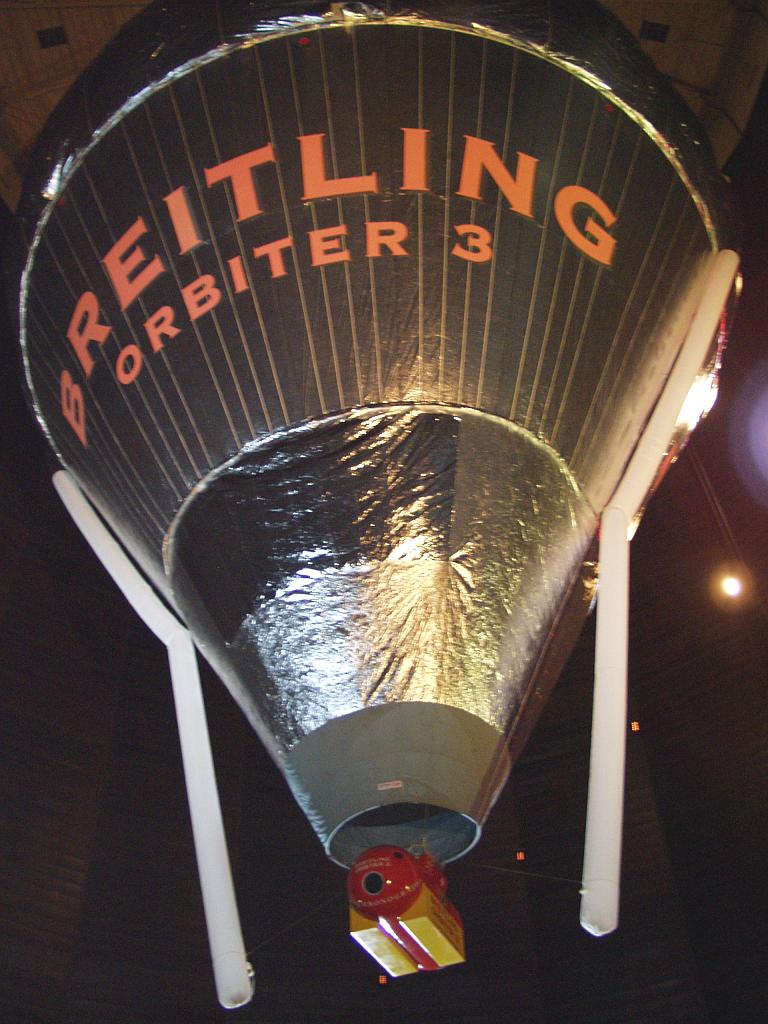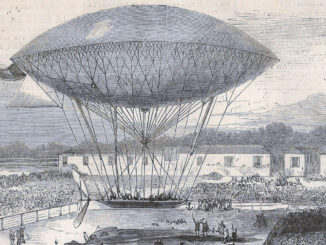
Between 1st and 21st March 1999, the first in history, successful non-stop balloon flight around the world was performed.
On 1st March 1999, balloonists – Swiss Bertrand Piccard (pilot) and English Brian Jones (co-pilot) set off in Breitling Orbiter 3 balloon with a goal to become the first men to circumnavigate the world in a balloon without any stopovers. The take-off was held at 8.05 GMT in the Chateau-d’Oex placed in the Alpine region of Switzerland.
In the first stage of the flight, the balloon headed South-West and flew over the Mediterranean Sea and then slightly turned East to reach the starting meridian over Mauritania in Africa, on 2nd March.
The next day, on 3rd March after catching an appropriate wind stream the Breitling Orbiter 3 and its two-man crew have begun their actual sky journey around the world. The route of the flight, including part to starting point led over the following countries – Switzerland, Italy, France, Monaco, Spain, Morocco, Mauritania, Mali, Algeria, Libya, Egypt, Sudan, Saudi Arabia, Yemen, Oman, India, Bangladesh, Myanmar, People’s Republic of China, Taiwan, Japan, Mexico, Guatemala, Belize, Honduras, Jamaica, Haiti, Dominican Republic, Puerto Rico and then again Mauritania, Mali and Algeria, to finally land in Egypt. Nevertheless most of the desired route led over the Atlantic and Pacific Oceans and the earlier mentioned Mediterranean Sea.
The Breitling Orbiter 3 finished its circumnavigational, record breaking flight after almost three weeks – to be exact, after 19 days, 21 hours and 55 minutes and travelling 45 755 kilometres in total. Bertrand Piccard and Brian Jones have landed in Dakhla, Egypt on 21st March 1999.
Speaking about records, Piccard and Jones managed to break seven records officially confirmed by the FAI World Air Sports Federation. Those included three absolute records of:
- Distance travelled by balloon – 40 814 kilometres.
- Duration of flight for the balloon – 477 hours and 47 minutes;
- Shortest time around the world for the balloon – 370 hours and 24 minutes;
Those three, above mentioned records were also ratified by the FAI for the AM-15 balloon class. Additionally, the crew managed to break another record of the highest altitude reached by balloon – 11 737 meters, that was also confirmed for the AM-15 class.
Undoubtedly, that record flight couldn’t be successful without the equipment, that was used for the purpose. The balloon of Piccard and Jones, named Breitling Orbiter 3 had a Rozière type envelope manufactured by one of the leading ballooning brands, Cameron Balloons. That’s a kind of hybrid balloon envelope, consisting of two chambers for non-heated (in this case, helium) and heated lifting gas as well and was named after its inventor. The heat the air in the second chamber the balloon was equipped with six burners, fuelled by 28 propane gas cylinders mounted on both sides of the gondola. Instead of a standard balloon basket the crew used a specially designed gondola made of kevlar and carbon fibre weave. Besides of the materials used to build it, the capsule was hermetical and pressurised. It had a special system allowing to keep a constant pressure similar to that prevailing at altitude of 3000 metres, by adding oxygen and nitrogen and removing carbon dioxide with special filters, when necessary. The capsule also had solar panels installed beneath it to provide power for the systems, including navigation and communication ones. The gondola of Breitling Orbiter 3 used in the historic flight was later handed to the National Air and Space Museum at Dulles Airport, Washington. For several years could be seen in the Milestones of Flight Gallery, next to other famous aircraft, such as Wright Brothers 1903 Flyer, Charles Lindbergh’s Spirit of St. Louis, the Mercury Friendship 7 and Gemini IV space capsules, the Apollo 11 command module and Space Ship One as well. Now the gondola is displayed ad Udvar-Hazy Centre of the National Air and Space Museum in Washington.
The crew, Bertrand Piccard and Brian Jones were additionally granted with a one million dollar prize given by one of a major brewery companies. The pilots donated half of the sum for organizations helping poor children from the countries, the Breitling Orbiter 3 flew over. Additionally, they were awarded with the „Magellan Award” by the Circumnavigator’s Club from New York City.
In 1999, both founded the Winds of Hope Foundation, that helps to fight with suffering around the world.
Photo: Spare envelope of the Breitling Orbiter 2 exhibited as Breitling Orbiter 3 at the Gasometer Oberhausen from 2004 to 2006. (© Raimond Spekking / CC BY-SA 4.0 (via Wikimedia Commons))
Sources: bertrandpiccard.com, fai.org, myhero.com



